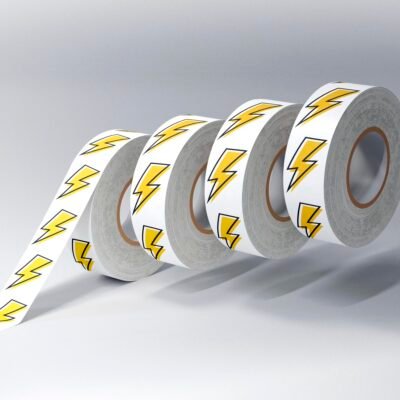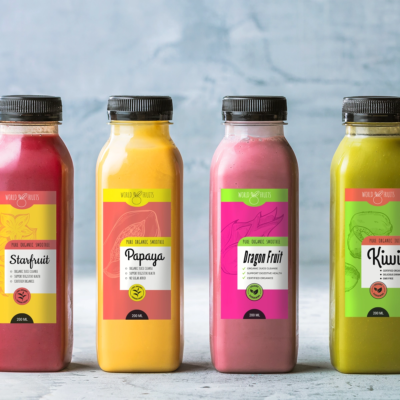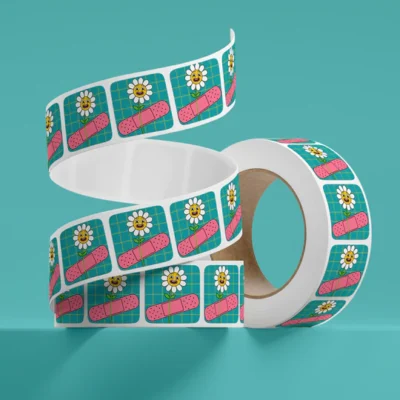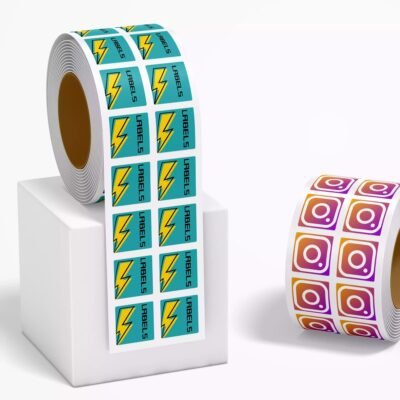When it comes to adhesive products, terms like stickers, labels, and decals are often used interchangeably. However, each of these products has distinct characteristics and uses. Understanding these differences can help you choose the right product for your specific needs. This article explores the nuances between stickers, labels, and decals, highlighting their unique features, intended uses, sizes, application surfaces, and longevity.
Stickers
Definition and Features: Stickers are versatile adhesive products that typically feature graphics, logos, or illustrations. They are composed of two layers: a decorative layer with adhesive on the back and a paper backing that is peeled off before application. Stickers are often printed on vinyl or paper and are known for their ease of application and removal.
Uses: Stickers are commonly used for decorative purposes, branding, and promotional activities. They can be applied to a wide range of smooth surfaces, including laptops, water bottles, notebooks, and car bumpers. Due to their vibrant designs and ease of customization, stickers are popular for personalizing items and as giveaway items in marketing campaigns (CustomStickers.com).
Size and Quantity: Stickers are generally small and are produced in bulk. They can be ordered in various quantities, ranging from single pieces to thousands, making them ideal for both personal use and large-scale promotional distributions.
Application Surface and Longevity: Stickers are best suited for smooth and flat surfaces. While they are durable, their lifespan varies depending on the material and exposure to environmental factors. Vinyl stickers, for example, can last several years, especially if used indoors.
Labels
Definition and Features: Labels are a type of sticker primarily designed for informative purposes. They often include text, such as product information, branding details, or regulatory data. Labels are typically made from paper or polyester and are designed to adhere to various packaging materials.
Uses: Labels are essential in product packaging, providing critical information such as nutritional facts, ingredients, instructions, and barcodes. They are widely used in industries like food and beverage, pharmaceuticals, and retail. Labels help in branding products and ensuring compliance with regulatory requirements.
Size and Quantity: Labels come in various sizes, often tailored to fit specific packaging types, such as jars, bottles, cans, and boxes. They are usually produced in large quantities and supplied in rolls or sheets for easy application during the packaging process.
Application Surface and Longevity: Labels are designed to adhere to a variety of surfaces, including glass, plastic, and metal. While they are not typically intended for long-term use, some high-quality labels can withstand environmental factors for extended periods, particularly when used indoors.
Decals
Definition and Features: Decals are a specialized type of sticker, generally larger and designed for decorative or advertising purposes. They consist of three layers: a paper backing, the adhesive design, and a transfer paper on the front. Decals are often made from vinyl and are intended for more permanent applications compared to regular stickers.
Uses: Decals are commonly used for large-scale applications such as vehicle graphics, window displays, wall art, and floor graphics. They are popular in both commercial and residential settings for their ability to create impactful visuals and advertisements (StickerYou).
Size and Quantity: Decals are typically larger than stickers and labels and are ordered in smaller quantities. For instance, businesses might order a few large decals for store windows or company vehicles, whereas stickers and labels are ordered in bulk due to their smaller size.
Application Surface and Longevity: Decals are designed to adhere to various surfaces, including walls, windows, floors, and vehicles. They are built to withstand outdoor conditions and can last several years, especially when laminated for added protection. This durability makes decals a preferred choice for long-term advertising.





